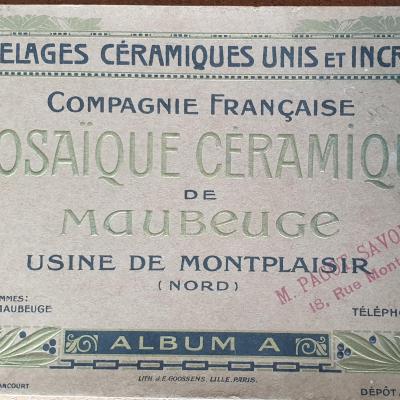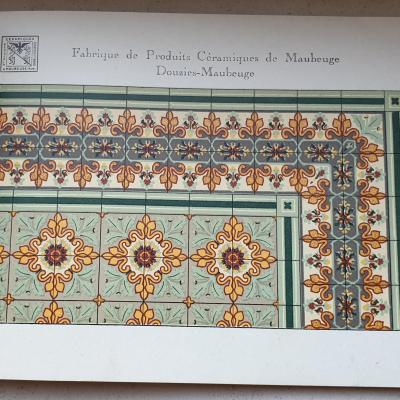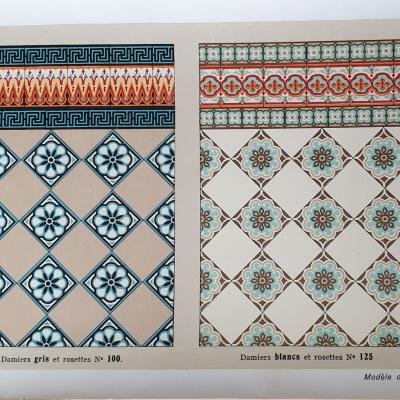3.9m2 antique French Douzies Maubeuge ceramic tiles
A small 3.9m2 / 42 sq ft antique French ceramic encaustic tile manufactured by Carrelages ceramiques de Douzies Maubeuge in the early part of the twentieth century,
These 15cm square tiles have cleaned superbly and the ceramic is excellent. The field tile is of a soft sage green slip with oak leaves and acorns cornering each single tile though on a larger scale the design is anchored in a bold four tile motif primarily in mustard, The 14.5cm sq geometric border tiles are beautifully detailed with the blue especially crisp in colour and they frame the floor elegantly. Owing to the handmade nature of the tiles there is some tonal variations in colour as shown in the random selection of a section of the floor in the gallery. However, we have close to 200 of the borders available and if you are looking for a more consistent colour presentation that's something we could supply.
There are no border corner pieces but their geometry allows for easy mitre cutting to create a limitless number of corner tiles and we have shown an example of the mitre cut border corner in the gallery.
The floors condition is very good and it has an aged patina evident in small tile edge nibbles and the occasional small grout-able chips that can be seen in the high resolution photographs below.
Being ceramic encaustic the tiles can be laid inside or outside of the home.
Tile quantities, give or take one or two:-
FIELD - 120 tiles - 2.7m2 / 29 sq ft.
BORDERS* – 60 tiles 1.35m2 / 14.5 sq ft - 9 linear metres / 29.5 linear feet
*There are 60 border tiles sold with the floor although a further 125 are available, if required.
NOTE
Antique tiles were most commonly made in single or two tile moulds. Before current computer automation methods their moulds were made my hand and the colour slips mixed by eye. Kiln temperatures could also be variable, as could the firing time. The result is that often tiles display subtle size and thickness variations and there can be tonal variations in colours, owing to the slip mixing and/or firing time. All of this makes these handmade tiles unique and adds to their charm. Some floors display their subtle variations in size and tones, some not, but when photographing we always take a random section of the floor so that it is representative of the whole. A tiler should always dry lay a section of the tiles to familiarise himself with them before starting to fix lay.
MAD70







